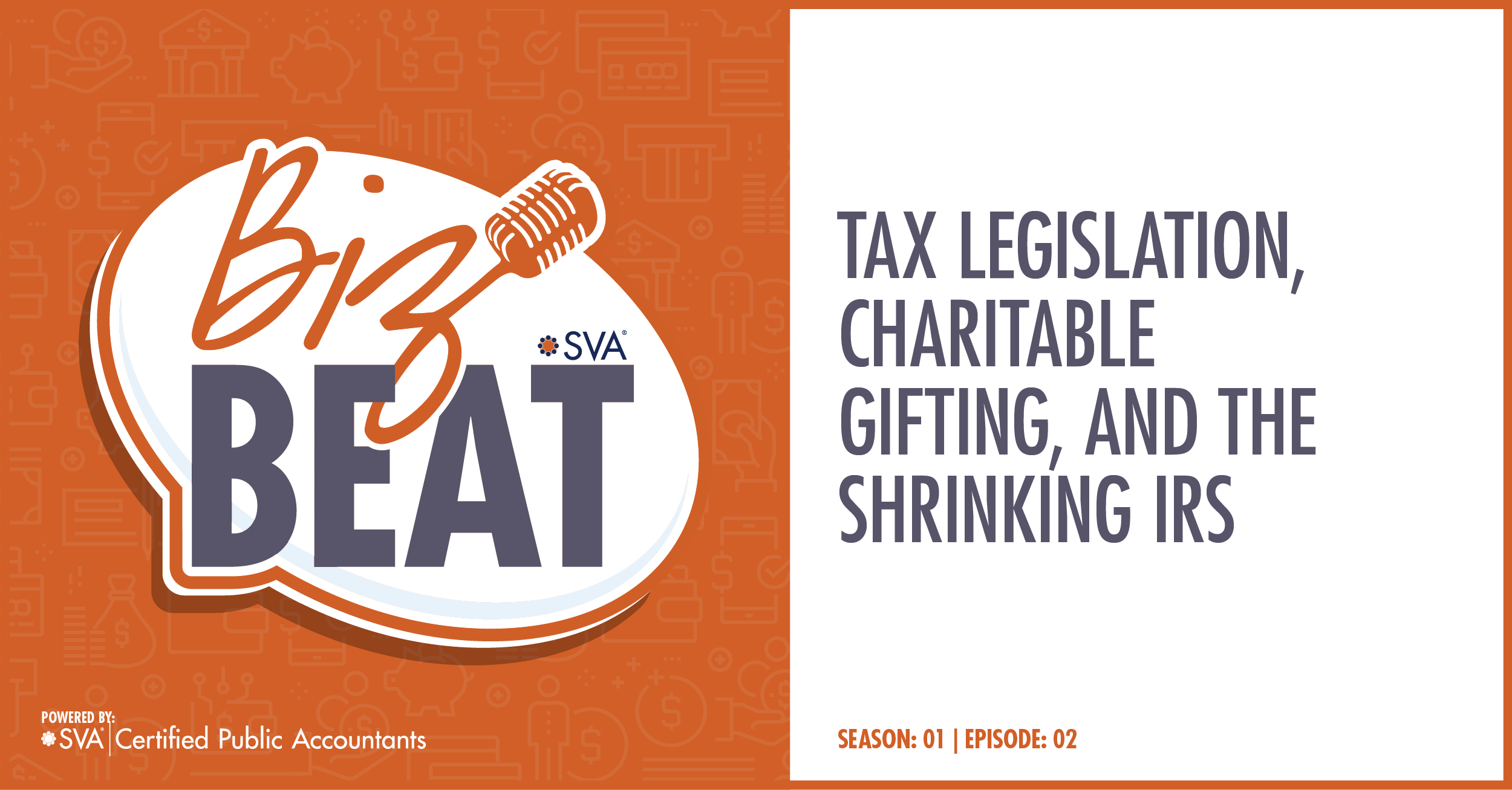With provisions from the 2017 Tax Cuts and Jobs Act (TCJA) nearing expiration, the conversation around federal tax reform is heating up.
Political negotiations are already underway, and taxpayers (especially business owners and high-income earners) should be paying close attention to what may be on the horizon.
From potential new tax breaks to structural changes at the IRS, there are several developments worth noting now to prepare for what could impact tax planning strategies in 2025 and beyond.
(Download Video Transcript)
Expiring Tax Cuts and a New Round of Proposals
A significant portion of the TCJA is scheduled to sunset at the end of the year. Lawmakers are considering a range of options, from fully extending the provisions to replacing them with updated policies. While the details remain in flux, several proposals have emerged as early frontrunners.
Among the most talked-about ideas:
- Eliminating federal income tax on tips and overtime pay
- Removing income tax on Social Security benefits
- Wiping out tax liability for individuals earning under $200,000
The intent behind these proposals is to create tax relief for working- and middle-class Americans—but that relief will require replacement revenue to balance the federal budget. That’s where tariffs enter the conversation.
Tariffs as a Revenue Source
Increased tariff collections have been floated as a way to offset revenue losses tied to new tax cuts. In particular, some proposals suggest that expanding tariffs on imported goods could generate enough funding to eliminate income taxes for those earning below certain thresholds.
While the practicality of this approach remains uncertain, it signals a shift in how some policymakers are thinking about balancing fiscal goals—using trade policy as a funding mechanism for domestic tax reform.
Even if such sweeping changes aren’t immediately implemented, tariff policy is expected to play a larger role in upcoming tax debates and could indirectly impact pricing, supply chains, and ultimately, taxable income for U.S. businesses.
Business Deductions on the Table
Several additional items are also under discussion that would directly affect business owners and high-income individuals:
R&D Expense Deductions
Currently, research and development costs must be amortized over five years. Lawmakers are considering a return to full immediate expensing to encourage innovation.
State and Local Tax (SALT) Deduction
The $10,000 cap on the SALT deduction, imposed under the TCJA, has faced pushback. Proposals to raise or eliminate the cap are again gaining traction.
Each of these changes could significantly impact tax planning strategies, especially for companies with heavy investments in R&D or executives residing in high-tax jurisdictions.
Strategic Gifting with Appreciated Assets
Beyond proposed legislation, one timeless strategy worth revisiting is the use of appreciated assets for charitable contributions.
Rather than donating cash, taxpayers can gift investments (like stocks) that have increased in value. Doing so provides two primary benefits:
- Avoiding capital gains taxes on the appreciated value
- Claiming a charitable deduction equal to the fair market value of the asset
For example, gifting a stock worth $10,000 (originally purchased for $4,000) allows the donor to avoid paying tax on the $6,000 gain, while still claiming a $10,000 deduction.
To amplify the benefits further, appreciated assets can be contributed to a donor-advised fund (DAF). This type of fund allows donors to claim the full deduction in the year of the contribution, while spreading the disbursement of donations to charities over time.
This approach can be especially effective for taxpayers who want to “bunch” deductions into a single tax year to exceed the standard deduction threshold.
Shrinking IRS Workforce: What It Means for Taxpayers
In parallel with proposed tax changes, the IRS is undergoing a substantial restructuring. The agency is actively reducing its workforce through early retirement offers and cuts to probationary staff.
To fill the gap, the IRS is leaning heavily into automation and technology upgrades. But in the short term, fewer employees likely means:
- Longer processing and response times
- Fewer audits, particularly of small and mid-size businesses
- Increased reliance on third parties (like tax professionals) to navigate the system
While fewer audits might sound like good news, delays in resolving tax matters or responding to notices can create new challenges. Businesses should prioritize working with experienced tax professionals who understand how to navigate IRS processes efficiently and advocate effectively when issues arise.
Stay Ahead with The Biz Beat
Want more insights like these? The Biz Beat by SVA is your weekly go-to source for practical tax and business advice.
Subscribe on Apple Podcasts, Spotify, or YouTube
Submit questions at sva.com/bizbeat
© 2025 SVA Certified Public Accountants

